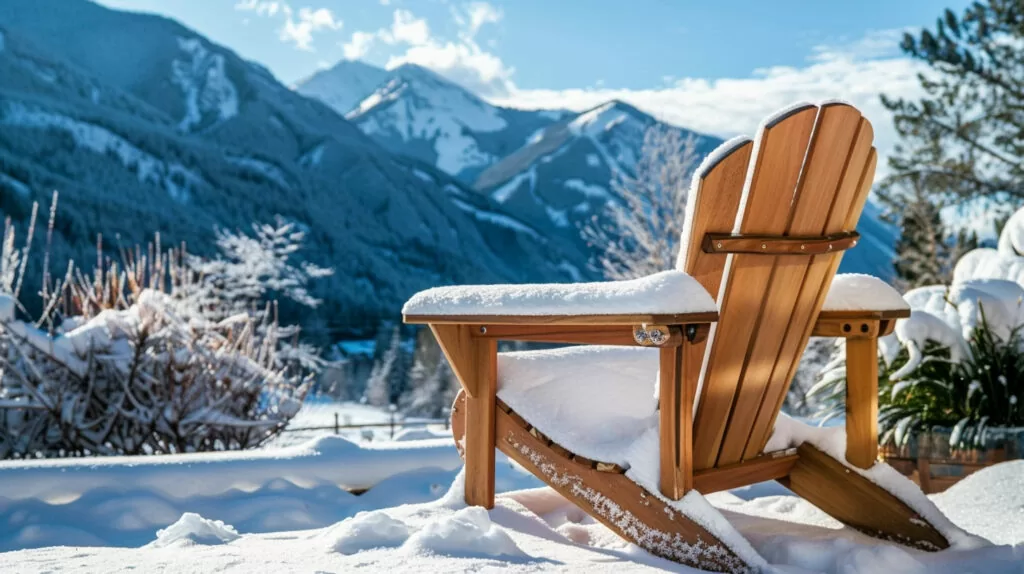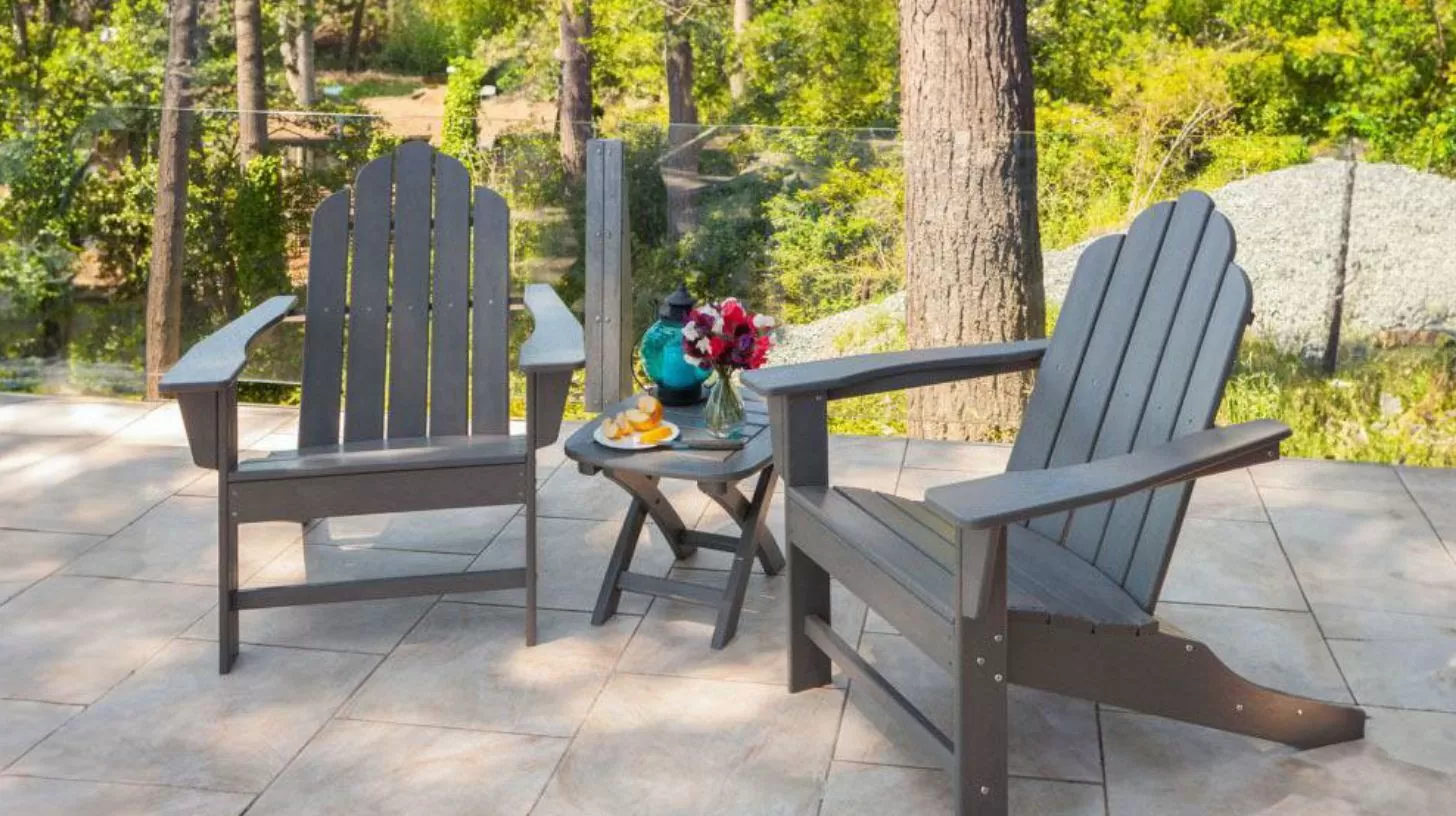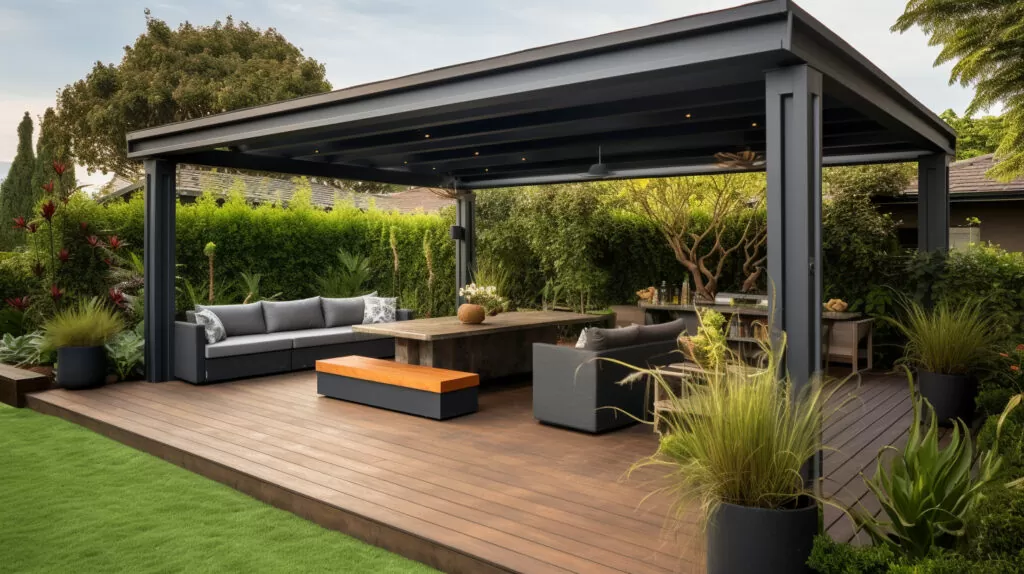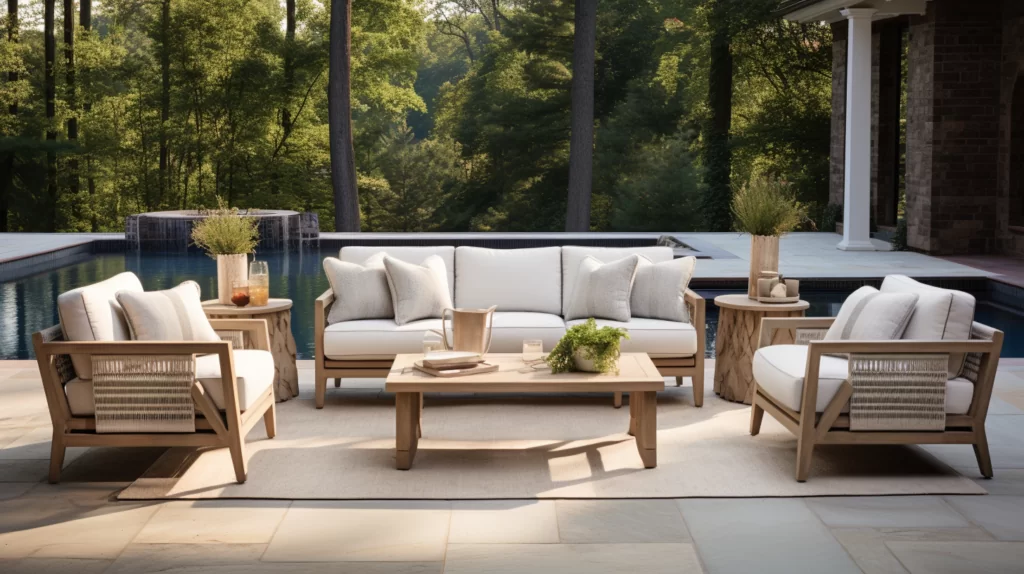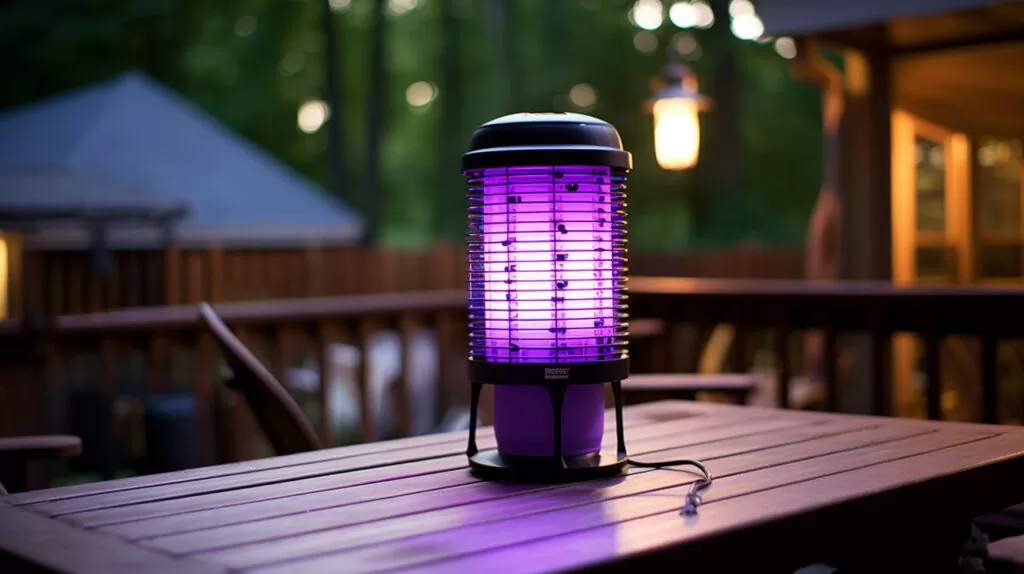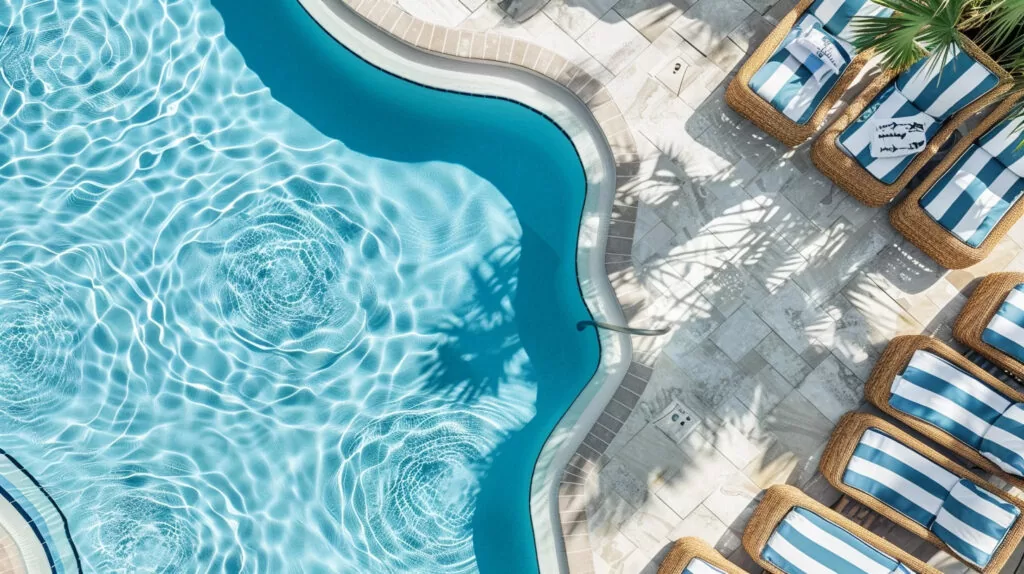Can all weather Adirondack chairs really last through all weather? Can they be used in every season? I love that laidback, classically-outdoorsy look. And every year, I can’t wait for those sun-drenched Adirondack summer moments. But what about blustery winter months? Can they stay in the backyard if it snows?
These are all great questions. And I’m bringing all of my outdoor furniture experience to get you the answers you need.
All Weather Tips:
- Choose the right materials for all-weather durability
- Consider alternative options like poly lumber for ultimate durability
- Regular cleaning and maintenance are crucial
- Treat and waterproof wooden chairs for added protection
- Seal joints and connections to prevent water damage
- Add weather-resistant cushions for comfort and style
- Cover or store chairs during extreme weather conditions
- Repair damaged areas promptly to avoid further deterioration
- Follow our tips to prolong the lifespan of your Adirondack chairs
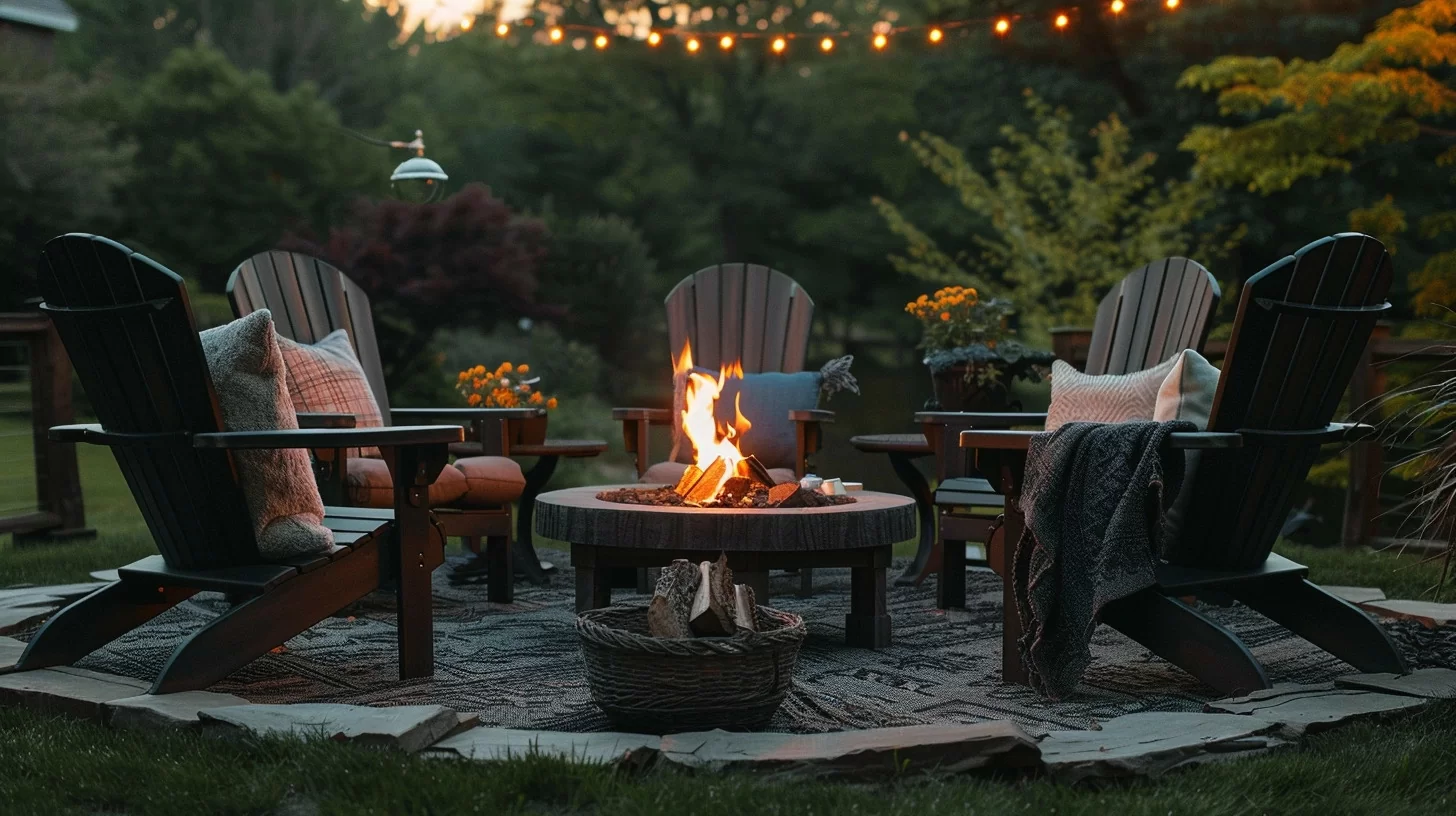
Best Materials for All-Weather Adirondack Chairs
So, can Adirondack chairs survive all weather conditions? Extreme heat? Rain? Even snow? YES! But you have to know your material. Plus, if you’re more of a luxury furniture kind of person (I know I am), some of these options definitely have that high-end look and feel.
Shopping for the perfect Adirondack chair among all these options can be daunting. But don’t worry, we have some insights for you. (And really, shopping is half the fun, right?)
Wood Adirondack Chairs
Wooden Adirondack chairs offer a warmer, natural look. But they do require more upkeep. The specific look and amount of effort varies widely, though. So I broke it down for you.
| Wood Type | Pros | Cons |
|---|---|---|
| Teak | – Highly durable and weather-resistant – Naturally resistant to insects, rot, and decay – Rich, golden-brown color that fades to an elegant silver-gray patina over time – Minimal maintenance required | – Expensive compared to other wood options – Heavy and difficult to move around – May develop small surface cracks over time due to natural oils |
| Acacia | – Durable and weather-resistant – Affordable compared to teak – Attractive, rich wood grain – Resistant to insects and rot | – Requires regular maintenance, such as oiling or sealing, to maintain its appearance – May develop cracks or splits over time if not properly maintained – Can be prone to warping or twisting in extreme weather conditions |
| Ipe | – Extremely dense and durable – Highly resistant to insects, rot, and decay – Naturally fire-resistant – Rich, dark brown color that fades to a silver-gray patina | – Expensive compared to other wood options – Very heavy and difficult to work with – Requires regular oiling to maintain its color and prevent cracking |
| Cedar | – Naturally resistant to insects, rot, and decay – Lightweight and easy to move around – Aromatic wood with a pleasant scent – Weathers to an attractive silver-gray color | – Softer wood that may dent or scratch more easily – May develop cracks or splits over time – Requires regular sealing or staining to maintain its appearance |
| Pine | – Inexpensive compared to other wood options – Lightweight and easy to work with – Takes paint and stain well – Readily available | – Softer wood that is prone to dents, scratches, and wear – Not as naturally resistant to insects, rot, and decay – Requires regular painting, staining, or sealing to protect against the elements |
The Long Island Nautical Adirondack 3-Piece Conversation Set by POLYWOOD, available at PatioProductions.com
Poly and Plastic Adirondacks
But you may be looking for that low-maintenance outdoor lifestyle. Then you’re going to want to look into high-density polyethylene (HDPE) lumber or other synthetic materials like plastic. These bad boys are built to shrug everything off. Rain. Snow. All good!
Plastic tends to be:
- More affordable
- Easy to clean and maintain
- Lightweight but sturdy
- Weather resistant
- Not as sophisticated looking as wood
- Can get hot in the sun
Don’t be turned off when you hear “poly” or “plastic”. Many poly outdoor chairs available today are 100% outdoor elegance. Composite wood Adirondacks give you that poly resilience combined with some seriously luxurious looks.
Cleaning and Maintenance of Adirondack Chairs
| Material | Cleaning | Refinishing | Storage |
|---|---|---|---|
| Wood | Wash with soap and water a few times per season | Sand and restain/reseal yearly | Store indoors during winter |
| Plastic | Wipe down with soapy water as needed | None required | Can be left outside year-round |
| HDPE | Wash with mild soap and water every few weeks | None required | Okay outside, but best if covered when not in use |
Regardless of the material, regular cleaning and maintenance are essential for keeping Adirondack chairs in tip-top shape. Give wooden chairs a good scrub with mild soap and water a few times every season. For polys, plastics, or HDPE chairs, a quick wipe-down with soapy water should do the trick. And don’t forget to let them air dry completely before use or storage. You don’t want icky mold or mildew. Trust me.
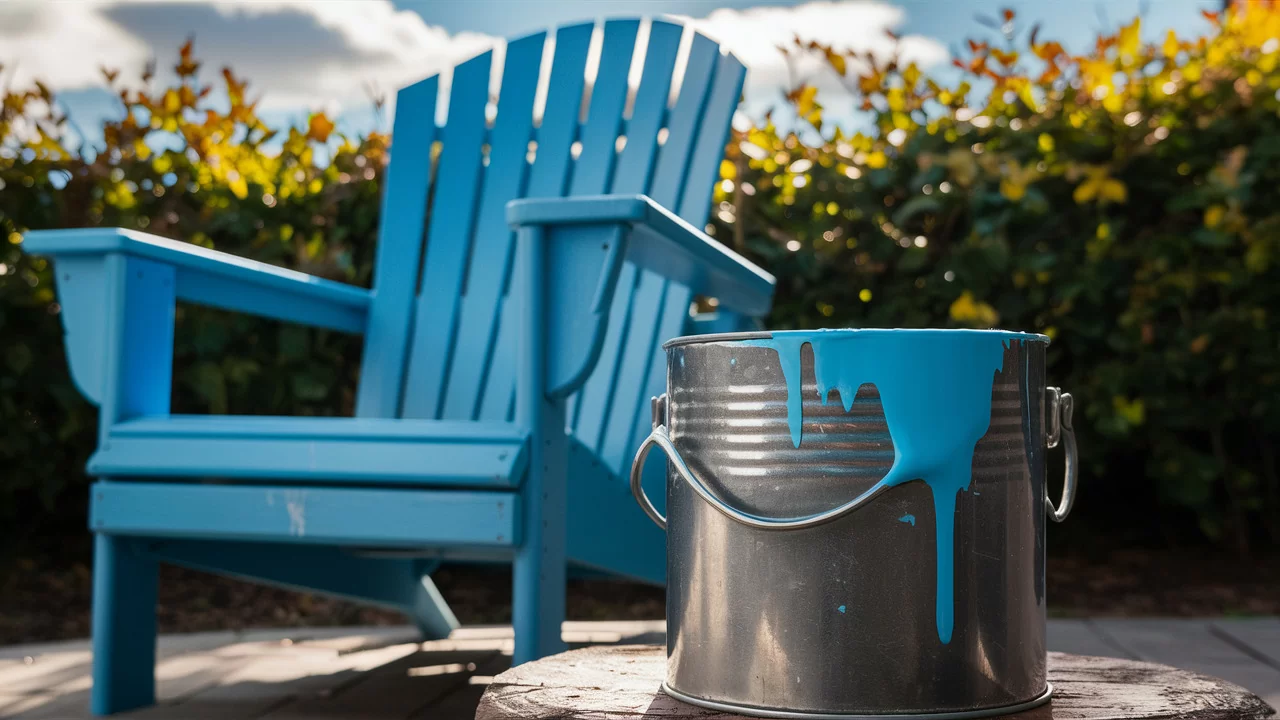
Treating & Waterproofing Adirondack Chairs
Wooden Adirondack chairs need treating and waterproofing for all-weather protection. Sealants like polyurethane, varnish, or lacquer create the strongest barrier against moisture. If you’re not a fan of chemicals, you can try teak or linseed oil. These can create a more natural look for wooden Adirondack chairs. And they’re intended to nourish the wood and enhance its natural resistance to the elements. But in my experience, they tend to be a lot more effort, and some oils have simply been less effective. So do your homework firt.
Sealing the Joints and Connections
What’s the saying? “The devil’s in the details?” For Adirondack chairs, that’s the joints and connections. Don’t overlook these. They’re particularly vulnerable to water damage, so it’s crucial to seal them properly. Use a waterproof sealant or caulk to fill any gaps or cracks, paying extra attention to the spots where the legs meet the seat and back. This extra step will help keep your chairs sturdy and prevent any unwanted wobbling.
Adding Weather-resistant Cushions
Just because your Adirondack chairs are built for all weather doesn’t mean you have to sacrifice comfort! Adding weather-resistant cushions is a great way to make your seating area even cozier while protecting the chairs themselves. Look for cushions made from durable, quick-drying fabrics like polyester or acrylic, and don’t forget to bring them inside during those super-stormy days.
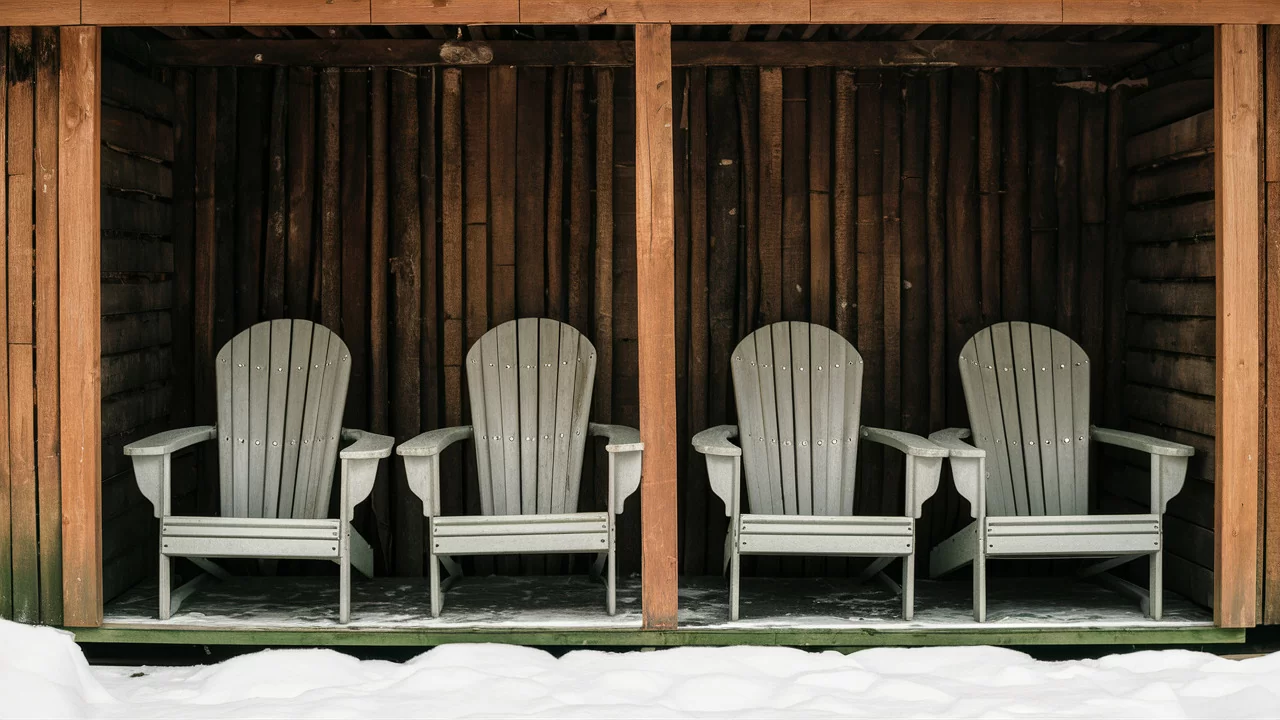
Covering or Storing the Chairs during Extreme Weather
Speaking of storms, it’s always a good idea to cover or store your Adirondack chairs during extreme weather events. Invest in some high-quality, waterproof covers that fit snugly over your chairs, or if you have the space, bring them inside a garage or shed until the coast is clear. This extra precaution will help extend the life of your chairs and keep them looking fresh for years to come.
All Weather Adirondack Chair Repair
Despite your best efforts, sometimes wear and tear is inevitable. If you notice any damaged or worn-out areas on your Adirondack chairs, don’t wait to fix them! Sand down rough spots, fill cracks with wood filler, and touch up any chipped paint or stain as soon as possible. Catching these issues early on will prevent them from turning into bigger problems down the line.
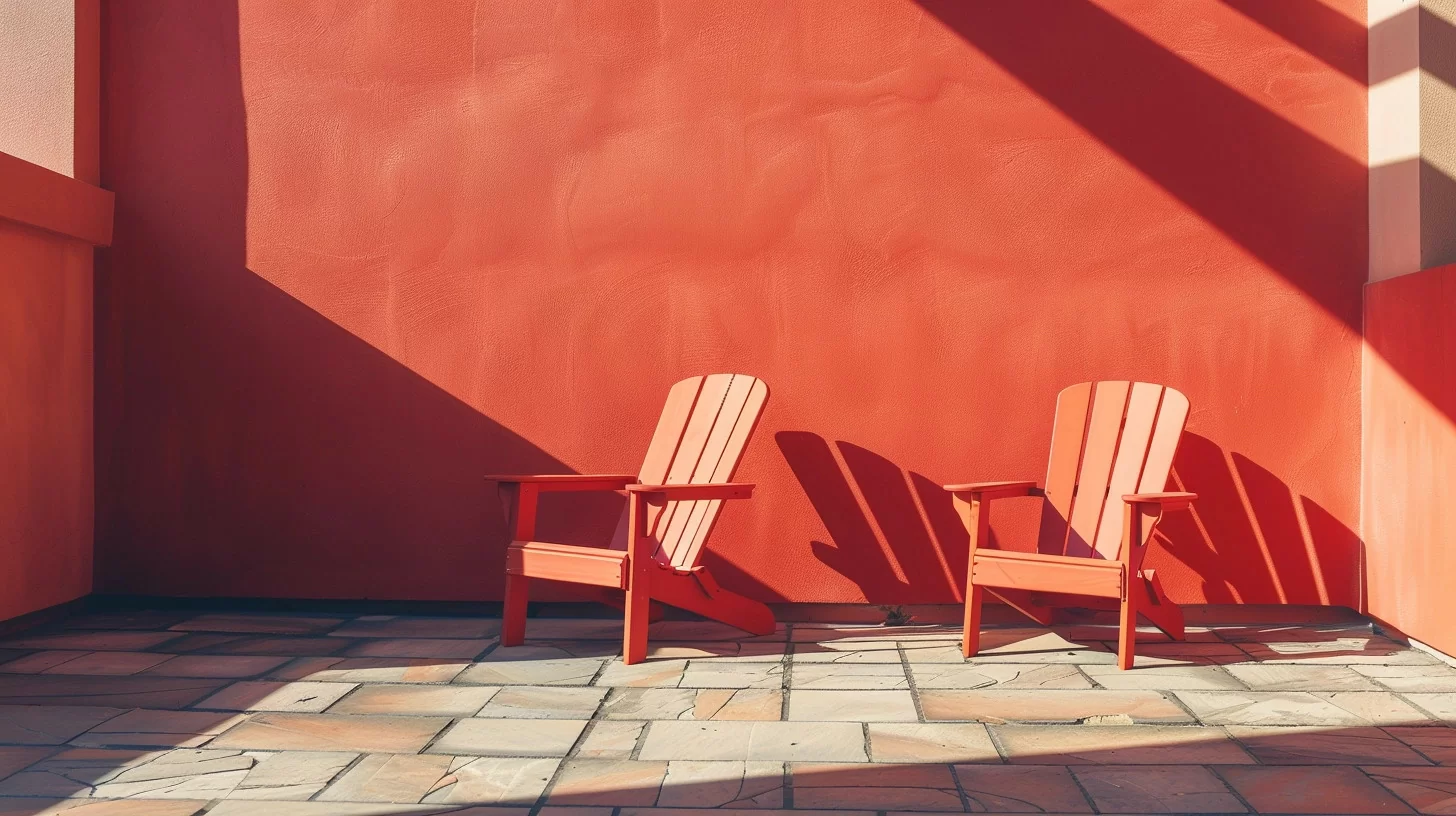
Tips for Prolonging the Lifespan of All-Weather Adirondack Chairs
Want to keep your Adirondack chairs looking their best for as long as possible? Here are a few extra tips:
- Clean your chairs regularly, even if they don’t look dirty.
- Apply a fresh coat of sealant or oil at least once a year.
- Tighten any loose screws or bolts as soon as you notice them.
- Use furniture pads or glides to protect the feet from moisture.
- Store your chairs in a dry, covered area during the off-season.
Prepping Adirondack Chairs for all weather conditions isn’t as hard as it may seem. Sure, every season brings its challenges. But now you’re an Adirondack chair expert! Know your materials. Maintain them smartly. And then just slip on those sunglasses, sit back, and relax, my friends. If you have any more questions, give our team a call or stop by the store in San Diego.

Eben Jol is a creative media specialist with over 9 years of experience creating helpful content for outdoor brands. In that time he has learned the ins and outs of the outdoor industry and has a keen understanding of what topics customers and information seekers need to know when they are planning and furnishing their outdoor space. He has gathered data and reported on industry insights for organizations such as the ICFA, and in his spare time, loves relaxing in his own backyard (and the great outdoors at large) with his wife and 3 kids.

